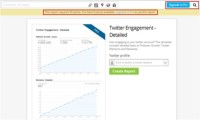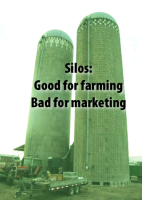 Separating product from marketing is never a great idea for any type of software but, for Software-as-a-Service, it can be a recipe for disaster.
Separating product from marketing is never a great idea for any type of software but, for Software-as-a-Service, it can be a recipe for disaster.
That’s because SaaS functionality is a double-edged sword: Get it right and it can aid your marketing; but copy it blindly from your onpremise version – or otherwise get it wrong – and it could wreck your company.
As leaders of tech companies know, unlike onpremise software, there’s no “pot of gold” at the end of the SaaS sales cycle rainbow. With their pay-per-use or subscription-based revenue model, SaaS vendors are always in a “sales mode” and must ensure that their marketing engine is running all the time.
The key goals of SaaS marketing are:
- Upgrade: Upgrade free trial / freemium users to paid plans
- Enhance usage: Grow user count and features used
- Upsell: Upgrade paid users to higher plans.
A product’s basic feature set can play a major role in enabling – or retarding – your marketing actions.
Let me unpack what’s now called “Product Led Growth” (PLG) / “Growth Hacking” with the following examples.
PRODUCT 1: SOCIAL MEDIA DASHBOARD

In onpremise software, it’s a UX best practice to show only relevant menus and options in order to reduce clutter and focus the user’s attention on their everyday tasks. As and when upgrades happened – typically once in 12-18 months – their screens would be reconfigured with the new features.
But this approach is questionable in SaaS: If users don’t know what features are available in the higher plan, why would they upgrade?
So SAAS needs a different UX paradigm. Best-in-class SaaS products provide visibility of every feature to every user, whether their current plan supports it or not.
By tickling their curiosity about the excluded features, the product can nudge users to higher plans.
Hootsuite does a great job of this in its cloud-based social media management dashboard software. Some of its notable features in this context are:
- Display the Pro upgrade screen whenever the user tries to link his sixth social media profile (the freemium version supports five profiles)
- Give a snapshot of what’s available in its premium Analytics module
- Amplify visibility for the “Upgrade to Pro” button by placing it next to the Search bar, which is one of the most frequently accessed parts of the software.
Let me hasten to add that Hootsuite does not stop with these growth hacking tactics. The company runs several marketing campaigns in parallel on a regular basis to make upgrades sweet by offering deep discounts on its premium plans.
PRODUCT 2: LEARNING MANAGEMENT SYSTEM
Initially developed for onpremise deployment, the developer of this LMS software ported the software to the cloud. Its engineering team treated the migration as a pure change in deployment method and left all product functionality unchanged.
A year after the SaaS version went live, less than 5% of the expected user base had signed up for it. Naturally, subscription revenues trailed targets by a wide margin.
After a quick review of the software and a site visit to a customer, we were able to nail the problem to a legacy feature carried forward from the onpremise version.
Under an onpremise regime, vendors contract for a certain number of user licenses and collect the License Fee from customers in advance. Any new user addition requires an offline license upgrade process. In line with this, it makes sense for an onprem software to be designed in such a way that it (i) does not allow new users to be added via the frontend, or (b) allows new users to be added only after they complete a long registration form.
Our customer opted for the second option, wherein the screen asked for the new user’s name, department, location, telephone extension, cost center and other information required by the SBU head to authorize their addition.
However, this was not fit for purpose for the SaaS version where new users simply clicked a button to signal their intent to use the software. There was no offline contracting process. Billing was done in arrears on a metered basis depending on the number of actually used the software in the previous month.
When new users clicked the said button, they saw a long registration form – a relic of the onprem version that was thoughtlessly carried forward to the SaaS version. This proved to be a major friction hotspot and frustrated many users who simply abandoned the signup process. Ergo the slow growth in user count of the SaaS version.
This was clearly a product problem showing up as a marketing symptom.
We addressed it by totally revamping the user onboarding functionality in the SaaS version. According to the new features we specified, new users would only need to enter their email address to seek access to the software. All other details required to authorize their addition would be automatically fetched from from the company’s Active Directory and seamlessly forwarded to the respective SBU head for approval.
This created an AHA moment and led to a sharp increase in users and subscription revenues.
SAAS must drive marketing. It’s absolutely necessary for its feature set to be spec’ced in such a way that it can achieve this goal.
We’re not alone in saying this. This is cited as a SAAS scaling best practice according to this video.
"Product itself must do Marketing" is a very key point, especially for SAAS. Here are a few ways of doing it. https://t.co/5wByxE7zbS
— Ketharaman Swaminathan (@s_ketharaman) January 8, 2021
Good news is, as long as the SAAS developer involves marketing from the early days of product development, it’s eminently possible to weave many growth hacking / PLG tactics into the product feature set.
Sales-Marketing Alignment is passé.
SAAS has a new credo. It’s called Product-Marketing Alignment.

